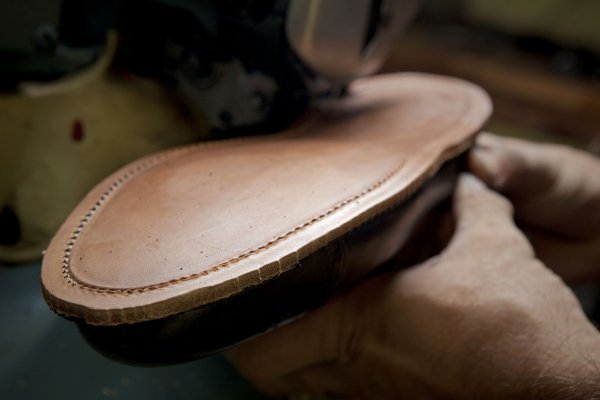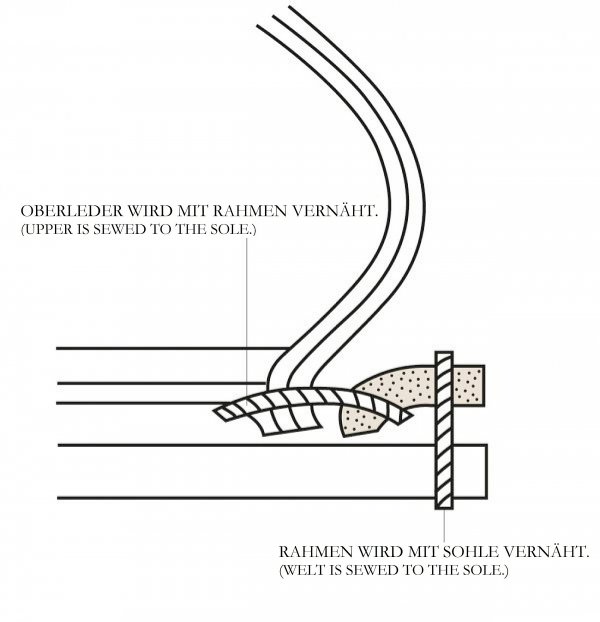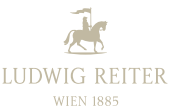The Royal Design
A typical Ludwig Reiter shoe is welted: a traditional technique, that is now seldom used by shoe manufacturers around the world, due to faster and cheaper methods which have been implemented without enhancing the quality of the shoe.
The 'Royal Design' of a welted shoe is produced throughout 200 – 300 individual steps. The shoe is created out of first grade leather which is very durable and elegant, with comfortable wearing features, becoming even more attractive with time, when treated appropriately.
The Flexible Centre
The challenging part when producing welted shoes is to ensure that when joining the upper leather to the shoe base that the shoe stays soft, comfortable, elastic but still robust and durable at the same time – a contradiction in itself. Reason being that the upper leather is joined to the shoe sole with two separate seams causing it to be both comfortable as well as long lasting.
The upper leather and the inner sole are sewn together with a continuous leather strip, the welt. The edging and the leather outsole are then joined by a second seam. The upper leather and the outer sole are indirectly and with flexibility joined to one another.
The advantage of welting: The whole shoe is constructed around a flexible centre, which enables foot movement and flexibility, which at the same time results in high comfort for the owner.

Step 1: The upper leather and inner sole are sewn together with a continuous leather strip.

Step 2: A second seam joins the edging and the outer sole.

The upper leather and the outer sole are indirectly joined to one another with two separate seams, making it flexible and robust at the same time.
Optimal Comfort
To increase the comfort of the welted shoe, the area between the inner and outer sole is filled with cork. A small wooden stabiliser is inserted within the cork.
Further advantage of a welted shoe with a leather outer sole: There is no barrier consisting of synthetic or adhesive materials between the inner sole and shoe base. This would hinder perspiration. The permeability of the leather is important in order to enable the feet to “breathe”.
The leather lining plays a major role too. It ensures a good environment by absorbing a great deal of the moisture.
The shoe needs to be “worn in” before it is most comfortable. The leather must adapt to the shape of the foot, and the inner sole and the underlying cork layer need some time to form around the foot’s shape.
Not only the durability but especially the construction of both elasticised seams and the cork insert make the welted shoe so comfortable and unique.
Technology Transfer
The welted shoe used to be produced purely by hand with an awl, needle and thread. Then, in 1872, the American Charles Goodyear Jr. patented and streamlined specially mechanised sewing machines for welted shoes. Hence the frequently used term 'Goodyear welted' or ,'Goodyear-Procedure'.
At the beginning of the 20th Century, Ludwig Reiter II, son of the founder of Ludwig Reiter, worked in the United States in the Endicott Johnson shoe factory for several years, where he learned the mechanised method of the welted shoe. Returning to Vienna in 1909, he brought the Goodyear-technique with him, purchased the suitable machines and gradually transformed his father’s workshop into a shoe factory.
Since then not much has changed at the Ludwig Reiter shoe manufacture as far as technology is concerned. Some of the original sewing machines are still in operation today. The classical technique of welting is still unsurpassed, internationally renowned and therefore very contemporary, concerning the production of quality shoes: a good example of Ludwig Reiter’s vision: 'The Future of Tradition'.
Custom-Made Shoes
Since the prefabricated shoe base cannot merely be attached to the shoe during the process of welting, but has to be built directly onto the shoe in stages, and good leather is a naturally grown product, the welted shoe continues to be finished by hand.
This enables not only a highly flexible product but also gives the client the opportunity to create their own personal shoe by combining their choice of last, upper leather and sole (custom-made).
